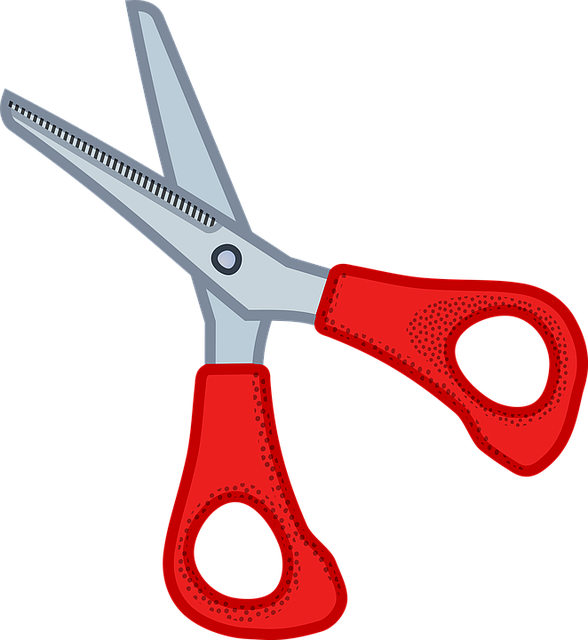Internal linking, powered by a smart internal links tool, optimizes website performance and user experience for search engines by enabling natural content hierarchy. This tool automates link placement, avoids keyword stuffing, and enhances SEO best practices. By guiding users and search engines through relevant content, it increases organic traffic and boosts online presence, making it an indispensable component of digital success. When choosing a smart internal links tool, consider site architecture and SEO objectives for tailored features, focusing on user experience and natural information flow.
Discover the transformative power of internal linking for boosting your website’s SEO performance. While traditional methods can be labor-intensive, modern solutions like smart internal links tools offer innovative ways to streamline and optimize this crucial aspect of search engine optimization. This comprehensive guide explores how these advanced tools simplify navigation, enhance user experience, and drive better search rankings. Learn about key features, selection criteria, and implementation strategies for harnessing the full potential of smart internal links tools.
- Understanding the Power of Internal Linking
- Challenges in Traditional Internal Linking Strategies
- Introducing Smart Internal Links Tools
- Key Features and Benefits of Advanced Tools
- Choosing the Right Tool for Your Website's Needs
- Implementing Smart Internal Links for Optimal SEO Results
Understanding the Power of Internal Linking

Internal linking is a powerful strategy that can significantly boost your website’s performance and user experience. When implemented smartly, it helps search engines understand your content hierarchy and navigate through your site with ease. By using a smart internal links tool, you can automate and optimize this process, ensuring every page on your site is interconnected in a meaningful way. This strategic approach enhances the overall SEO value of your website.
A well-crafted smart internal links strategy involves identifying relevant pages and creating links that direct users to related content. Smart internal links tips include using anchor text that accurately represents the linked page’s content, maintaining a natural flow of links throughout your site, and prioritizing user experience over keyword stuffing. By integrating these practices into your SEO strategy, you’ll not only improve your site’s visibility in search engine results but also provide visitors with a seamless browsing experience.
Challenges in Traditional Internal Linking Strategies

Traditional internal linking strategies often face several challenges that can hinder their effectiveness. One of the primary issues is manual link placement, which is time-consuming and prone to errors. Website administrators must manually identify relevant pages, insert links, and ensure a natural flow of anchor text, making it difficult to scale up or maintain consistency across large websites. This process can lead to inefficient link distribution, with some pages receiving excessive internal links while others remain underlinked.
Furthermore, traditional methods lack the intelligence to understand contextual relevance. Links placed without considering the surrounding content might appear unnatural and detract from user experience. This is especially problematic for dynamic websites where content is frequently updated, as manual adjustments are often required to keep internal linking strategies up-to-date and aligned with SEO best practices. A smart internal links tool addresses these challenges by offering automated solutions, ensuring a strategic approach to internal linking that boosts SEO efforts.
Introducing Smart Internal Links Tools

In today’s digital landscape, a well-crafted smart internal links strategy is an indispensable tool for any website aiming to enhance its online presence and SEO performance. Smart internal linking goes beyond mere connectivity; it involves strategically placing relevant links within content to guide users and search engines alike. By employing these tools, businesses can ensure their internal link structure is not only user-friendly but also optimized for search engine algorithms.
A smart internal links tutorial reveals a world of opportunities for website owners. These tutorials often provide step-by-step guidance on identifying key content pieces, creating relevant anchor text, and implementing a structured linking pattern. With the right approach, websites can establish a clear hierarchy of information, improve user engagement, and ultimately boost their search rankings. The benefits are manifold, from better site navigation to increased organic traffic, making smart internal links SEO an essential aspect for online success.
Key Features and Benefits of Advanced Tools

Advanced internal linking tools are transforming the way websites optimize their content for search engines. These smart internal links go beyond basic link placement by offering robust features that enhance both user experience and SEO performance. Key benefits include automated link suggestion algorithms, which analyze content relevance to propose strategic internal connections, thereby improving smart internal links optimization.
These tools also provide comprehensive analytics, allowing website owners to track the impact of their smart internal links strategy. By understanding how users navigate through internal links, site administrators can refine their smart internal links SEO efforts, ensuring better crawlability and indexing by search engines. This level of precision and data-driven insights is invaluable for maximizing the benefits of internal linking in today’s competitive digital landscape.
Choosing the Right Tool for Your Website's Needs

When selecting a smart internal links tool for your website, it’s crucial to align the choice with your specific needs and SEO goals. Not all tools are created equal; some offer advanced features for complex sites, while others cater to simpler structures. Understand your site’s architecture and traffic patterns to make an informed decision. For instance, if you have a vast and diverse collection of content, look for a tool that excels in creating dynamic smart internal links SEO strategies, ensuring relevant and contextual anchors.
Consider the smart internal links tips provided by experts: focus on user experience, maintain a natural flow of information, and avoid keyword stuffing. A strategic approach to internal linking involves understanding your audience’s navigation patterns and serving them with intelligent, relevant content connections. This, in turn, can enhance your site’s authority and improve rankings through a well-executed smart internal links strategy.
Implementing Smart Internal Links for Optimal SEO Results

Implementing Smart Internal Links is a strategic approach to enhancing your website’s SEO performance. This involves using specialized tools like a smart internal links tool to create well-structured and contextually relevant links within your content. By intelligently connecting related pages, you guide users and search engine crawlers through your site’s information architecture, fostering better navigation and understanding.
A smart internal links tutorial or tips can help you optimize this process effectively. These tools analyze your content and suggest optimal link placements, ensuring that each internal link adds value. Through smart internal links optimization, you not only improve the user experience but also signal to search engines which pages are most important, leading to better rankings and increased organic traffic.
